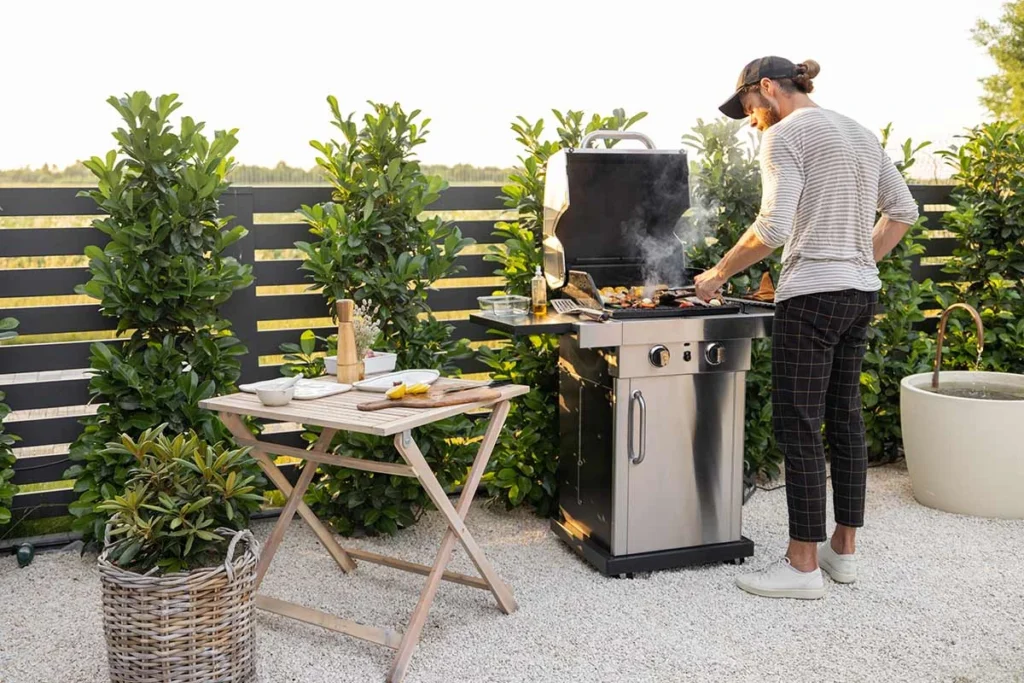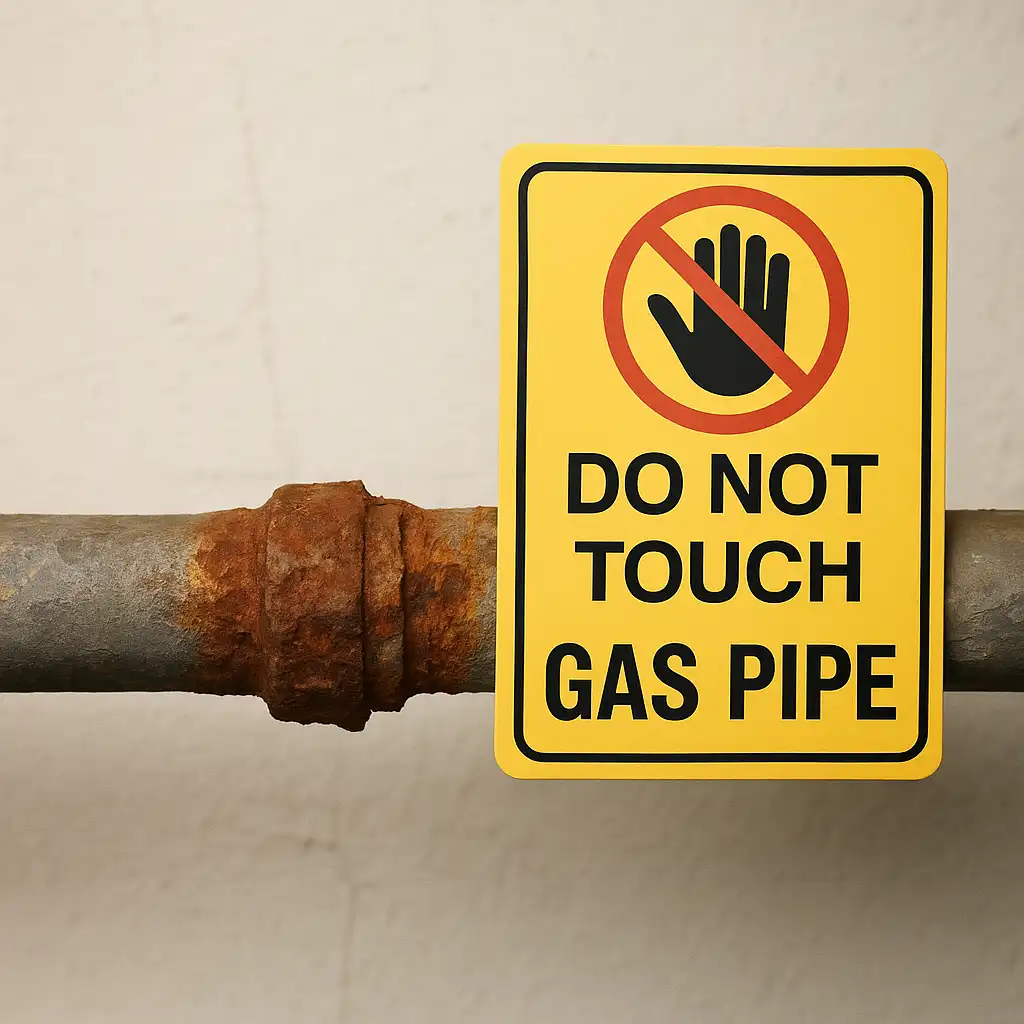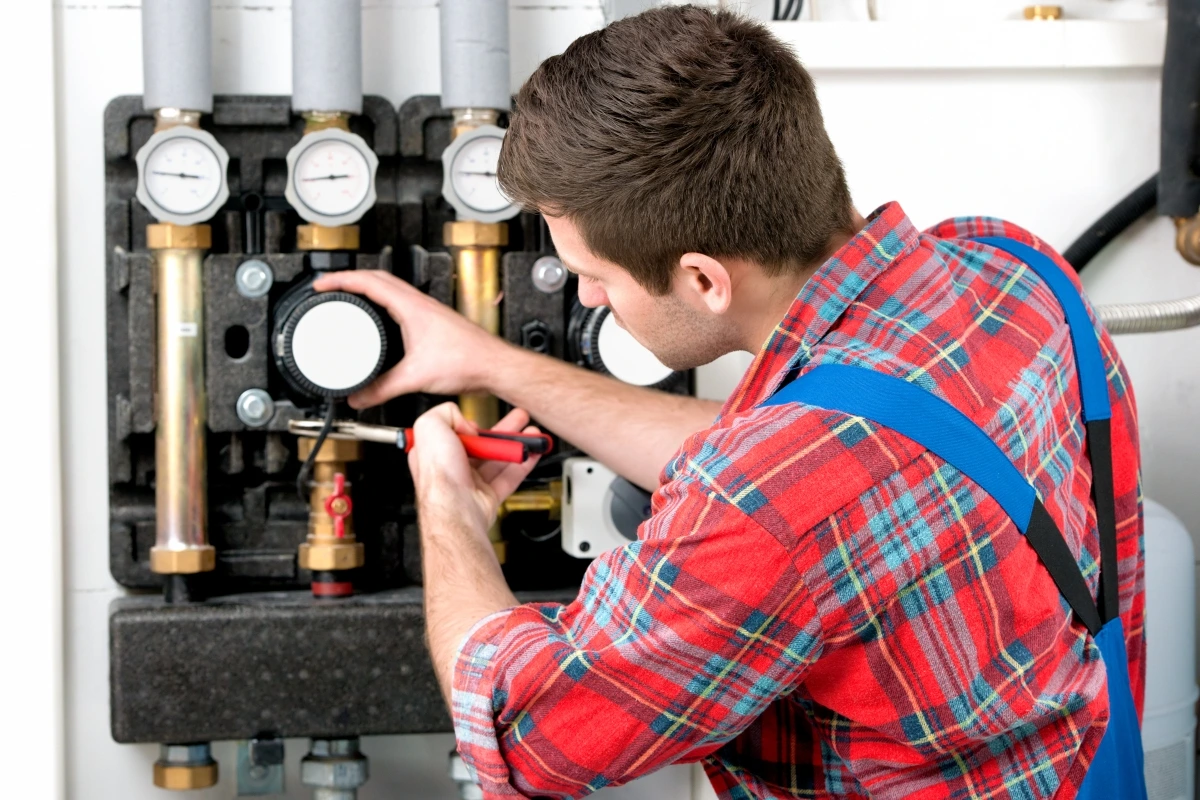Ever sniff a weird gas smell at your Orange BBQ and panic? I have – and it’s a real eye-opener. Gas is super handy in our Orange homes (for cooking, heating, BBQs and more), but a tiny leak or dodgy fitting can quickly turn a relaxing evening into a nightmare. Gas Fittings in Orange aren’t just plumbing parts; they’re the gatekeepers of our safety. In this blog, I’ll walk you through how high-quality, compliant gas fittings keep Aussie homes safe and spare you huge repair bills. Buckle up – we’re talking real risks, simple fixes, and some local Orange context to keep you informed (and entertained).

The Real Risk: How Gas Emergencies Begin
Picture this: It’s a crisp Orange winter evening and your neighbour’s heating comes on. Suddenly there’s a faint hiss in the wall, then a gas smell – and before anyone can react, boom. Emergencies like this often start with tiny leaks or bad installations. I’ve heard about mates who drilled into an old copper gas line thinking it was just plumbing; the repair bill was eye-watering. Small mistakes or worn-out fittings can cause gas to escape, creating serious risks like fires, explosions, or carbon-monoxide poisoning.
Gas leaks are sneaky. They tend to happen quietly – you might only notice them if you catch that rotten-egg smell, or hear a soft pssssh sound. In fact, licensed gas fitters say the most obvious sign is the “rotten egg” odour (a safety additive). You may also spot bubbles in a puddle near the yard pipe, or even dead patches in the lawn above underground lines. If you see any of these, get out and call the gas guys immediately.
Because Orange is inland and can get very cold, we often crank up the heaters or lighting fires – raising risk. Add ageing pipes in older homes, or DIY gas jobs that fell short, and you have a perfect hazard cocktail. NSW fire chiefs remind us that LPG (bottle gas) is heavier than air and can pool in a room; even a small spark (a light switch or thermostat) can ignite it and blow your home apart. In other words, gas emergencies are no joke – a tiny leak can have catastrophic consequences.
In short: emergencies often start with unnoticed leaks, old or improperly fitted pipes, or corrosion. One simple preventive step (a quick gas check) could save you tens of thousands later.
What Are Safe Gas Fittings? Why They Matter
So what’s the secret sauce? Safe gas fittings – those gold-star, standards-approved parts and installations that obey the rules. In Australia, that means parts and work certified to AS/NZS 5601 standards. A truly safe gas fitting isn’t cheap plastic or random bits you pick up online. It’s usually brass or stainless steel hardware made for gas pressure, installed by a licensed professional.
We can compare safe vs. unsafe quickly:
| Feature | Safe Fittings | Unsafe/Outdated Fittings |
|---|---|---|
| Certification | AS/NZS 5601 compliant (certified) | No mark or non-compliant |
| Installation | Fitters are licensed professionals | DIY or unlicensed hacks |
| Materials | Durable brass, stainless steel | Fragile plastics or corroded copper |
| Inspection & Cert. | All work comes with a compliance certificate | None provided |
| Lifespan | 10+ years (with upkeep) | Unpredictable; may rust or fail |
Safe fittings pass tests and inspections. By law, after any gas work a licensed fitter must give you a Certificate of Compliance stating the work meets AS/NZS 5601 rules. If your installer won’t give you this paper, consider it a giant red flag – non-compliant work could void your insurance and is downright dangerous.
Licensed gas fitters use special equipment (pressure gauges, gas detectors) to ensure every joint holds tight. They’re trained to avoid shortcuts. For example, a DIYer might skip purging air or tightening a thread properly – a licensed pro won’t risk it. Gas companies in Orange stress that only qualified experts should touch gas lines; in fact, DIY gas-fitting is illegal in NSW.
Basically, safe gas fittings check every box: certified parts, expert installation, and paperwork. Get all three, and you’re as protected as you can be.
Gas Fittings in Orange: Why Local Conditions Demand Safety First
Why make a fuss in Orange specifically? Well, Orange has its quirks. We’re about 860m above sea level with cool winters – many homes use gas heating or log burners. Plus, Orange is semi-rural: farms and older houses here often run on LPG bottles or have patchwork plumbing. Even slight ground shifts (common in our region) can strain old pipes. Combine that with occasional bushfire threats (LPG bottles are fire hazards if not shut off ahead of fires) and you’ve got a unique risk cocktail.
Local regulations matter too. In NSW (and Orange falls under it), gas installations must meet the Gas & Electricity Safety rules and AS/NZS 5601.1:2013. That means if you install or move any gas appliance – even a BBQ – it must be done by a licensed gasfitter who certifies it. Orange City Council reminds everyone that even small renovations (like adding a new kitchen range) requires a pro.
Seasonal Orange life also means gas gear sees varied use: imagine a well-used gas heater in winter vs. a rarely-used barbecue on a summer weekend. These temperature swings and heavy on-off cycles stress connectors. So Gas Fittings in Orange need to be up to the task – pressure-rated, flexible for movement, and double-checked for bushfire readiness (always turn off external gas bottles if bushfire threatens!).
In short, our patchwork climate and mix of city/rural homes make top-notch fittings essential. A passing mention: the NSW Fair Trading gasfitting guidelines even show that long, enclosed balconies (common in some Orange units) must follow strict flue clearance rules to prevent buildup. So the takeaway? Gas systems in Orange must be built tough and installed right, or “compliance” quickly becomes expensive headlines.
How Professional Gas Fitters Help Prevent Costly Disasters
Licensed gas fitters are the MVPs here. These folks (often plumbers with special gas credentials) have the training and tools to spot problems before they blow up. They do thorough checks: pressure tests on lines, tightness checks on connections, carbon-monoxide tests, you name it. For example, a pro will check that every regulator and valve on your LPG bottles is set right, and that the pressure in a natural gas line stays steady.
What exactly do they look at? Here’s the short list:
- Leak Detection: Using sniffer tools or soap tests to find even pinhole leaks in pipes.
- Appliance Testing: Ensuring stoves, heaters and ovens burn clean (a bright blue flame). A yellow/orange flame is a warning of incomplete combustion or CO risk.
- Pipework Inspection: Scanning all copper/plastic lines for corrosion, damage or improper joints.
- Pressure Testing: Making sure the system holds the right pressure (not too low or high).
- Ventilation Checks: Confirming vents, flues and chimneys aren’t blocked or incorrectly installed.
The best part? Catching tiny issues before they become emergencies saves you big money. That tiny leak once spotted can be fixed for a few hundred bucks – versus replacing a whole kitchen after an explosion. Regular inspections by pros cost a fraction of a full-blown call-out. In fact, routine maintenance avoids those dreaded “after-hours emergency fees” (which are often double or triple normal rates).

Choosing licensed experts means certificates and peace-of-mind. In NSW, every gas job (even a minor appliance swap) must result in a compliance certificate lodged with Fair Trading. So not only do you get the fix, you get paperwork proving it’s done right. No certificate = big trouble for your insurer and your safety.
In plain language: Gas fitters stop bad gas jobs dead. They know what a compliant, safe fitting looks like, and they won’t use anything less. As one pro puts it, “only licensed fitters have the tools and knowledge to work with combustible gases safely, ensuring installations are compliant and secure to prevent leaks”. That’s trust you can really breathe easy on.
Hidden Costs of Neglect: What You Could Be Paying For
Let’s talk dollars (or should I say “too-late dollars”) you might spend if you skip the safety dance. Ignoring gas fitting rules can burn a hole in your wallet fast. Consider these sneaky costs:
- Emergency Call-Out Fees: Think it’s just a few dollars to fix a leak? Try 3× normal hourly rate after hours. An overnight repair call-out can easily hit $500–$1,000 (yikes!).
- Major Property Damage: A small leak can lead to fires or explosions. Filling walls with gas then having them blow out, or replacing scorched cabinetry – cha-ching. We’re talking tens of thousands for a rebuild if gas ignites.
- Insurance Headaches: Many Aussie home policies require all work to meet code. If you didn’t use a licensed fitter or lost your compliance cert, a big claim (fire, flood from burst pipes, etc.) could be denied. That means you pay the tab.
- Business or Rent Loss: For landlords or small businesses in Orange, a gas incident can shut down income. Imagine a café or BnB closed for weeks after a kitchen accident – you lose revenue while repairs run.
- Health Costs: Carbon monoxide poisoning (from leaking gas heaters) can cause medical bills or even fatality. Having healthy lungs is priceless – and far cheaper to fix fittings than hospital visits.
None of these sounds fun, right? It’s a classic “penny wise, pound foolish” scenario. A licensed inspection or proper installation runs a few hundred dollars now. But an explosion or fire? That’s life-changing. In an ABC news story, NSW fire crews warned that it only takes a small unnoticed gas leak to “blow your home apart”. Ouch.
Bottom line: the real cost of cheap or outdated fittings is huge. Don’t let a $50 sticker fitment lead to a $50,000 disaster.
How to Know If Your Gas Fittings Are Due for a Check-Up
Okay, maybe you’re thinking, “When was the last time someone looked at our gas lines?” If you answered “no clue”, it’s probably time. Here’s a quick honesty quiz – do any of these sound like your home?
- You smelled gas: Even faintly, ever. That’s a clear red flag.
- Yellow or lazy flame: Gas appliances should have a blue flame. Yellow tips or flickering suggests incomplete combustion.
- Loose or rusty connectors: If your hose fittings or copper pipes look old, split, or brittle, they might be leaking.
- No check in 3+ years: Modern advice is a full service at least every 2 years. If you’re past that, book it.
- Strange appliance behavior: Pilot light going out, gas cooking sluggishly, or unexplained hissing sounds near meter or pipes.
- New renovations: Added a new range, heater or cylinder? You need a pro to re-certify the system.
If any one of those bites you, drop everything and call a licensed gas fitter. Don’t wait for a hiss to turn into a disaster. As one NSW professional notes, a simple soapy-water test around your joints can detect leaks: just spray, watch for bubbles, and if any appear turn off the gas and call in the pros.
Remember – gas is cheap to maintain, expensive to ignore. Have your gas system checked by a qualified fitter regularly, just like you service your car or smoke alarms. Your nose (and wallet) will thank you.
Safe Gas Fitting = Safe Future: Long-Term Benefits
Investing in safe gas fittings isn’t just about avoiding doom – it’s about enjoying peace of mind and even saving money in the long run. Here’s the upside list:
- Peace of mind: Knowing your home is leak-free means less anxiety, especially with kids or elderly around. Sleep easier when you know the gas line isn’t ready to go kaboom!
- Lower insurance premiums: Some insurers give discounts if you can prove compliance certificates and regular maintenance. Safe gas habits can pad your wallet via insurance savings.
- More efficient appliances: Properly fitted lines and tuned burners burn cleaner and more completely. That means lower gas bills and fewer emissions. Good for your bank balance and the planet.
- Longevity of equipment: When gas flow is right and fittings aren’t dripping, appliances and pipes last longer. You’ll delay that painful stove or heater replacement by years.
- Quick resale/lease comfort: If you sell or rent your property, having up-to-date certificates and safety-checked gaswork can be a selling point (or requirement). Buyers and tenants trust compliance.
For example, picture a happy Orange family grilling lamb chops on a summer evening, windows open, kids in the yard – that joy is only possible because all the gas gear is solid. No creeping leaks to ruin the fun. That’s the safe future on the table – and it starts with one good decision now.
What to Look for in a Gas Fitter in Orange
When choosing who to trust with your gas system, remember: credentials first, price later. Here’s a quick checklist for finding a top-notch gas fitter in Orange:
- Licensed and Insured: Verify they have an Australian gasfitting licence for NSW (ask to see it). All professionals should have it openly. It’s illegal to do gas work without one.
- Transparent Pricing: A reliable fitter will give a clear quote and won’t penalize you with secret fees. Watch out for shockingly cheap bids – quality work costs a bit.
- Emergency Ready: Good companies offer 24/7 leak services. Gas trouble can strike anytime; you want someone who answers their phone at 3 a.m.
- Warranty/Guarantee: Ask if they guarantee their work or parts. It shows confidence and protects you if something goes wrong.
- Compliance Certificates Issued: They must provide a compliance certificate upon completion. If they leave without giving you paperwork, stop them at the door.
- Local Reputation: A quick Google or word-of-mouth check can tell you a lot. Orange neighbors or forums might recommend a friendly, on-time fitter.
- Up-to-date Practices: The best fitters follow the latest codes (AS/NZS 5601.1:2022, etc.) and use modern testing gear. Ask about their testing methods – they should mention leak detectors or pressure testing, not just eyeballing.
For more detail on licensing, the NSW Fair Trading site is a goldmine. They emphasize: always hire a licensed gasfitter for any installations or repairs. After the work is done, they should lodge the certificate with NSW Fair Trading online (via MyInspections gateway). You can even double-check via the state’s database if needed. Don’t be shy – a genuine pro won’t mind you asking these questions.
FAQs
How often should gas fittings be checked?
At least every 2 years by a licensed fitter, or immediately if you smell gas or see signs of a leak (like yellow flames or hissing sounds). Regular service keeps things safe.
Are all gas fittings the same?
No. Only AS/NZS 5601-certified parts installed by licensed professionals are safe. DIY or cheap fittings are often non-compliant and risky.
Can I DIY gas fitting work in Orange?
Absolutely not. In NSW only licensed gasfitters can legally do gas work. DIY gas jobs are illegal and dangerous – leave it to the experts.
Stay Safe, Orange!
Let’s wrap up: gas leaks and fittings might seem boring, but they’re serious business for homes in Orange. By choosing safe gas fittings – that is, certified equipment installed by licensed pros – you dramatically reduce the chance of emergencies and save money in the long run.
The top takeaways? Regular inspections catch problems early, licensed fitters are a must, and keeping records (compliance certificates) keeps your insurance honest. It’s all part of practising good gas safety – not just for compliance, but for peace of mind.
If you’re in Orange and haven’t thought about your gas fittings lately, now’s the time. Don’t wait for a hiss or a spark to remind you! Grab your phone, call a trusted gas professional, and book an inspection. A quick check today can stop a crisis tomorrow.
Stay safe out there, and keep those gas fittings right – because in the end, a little prevention keeps your home happy and your wallet intact.

